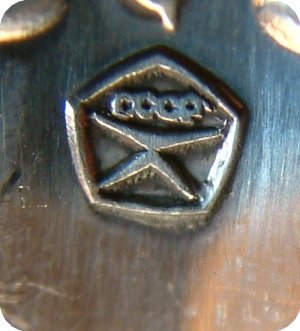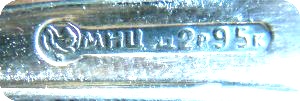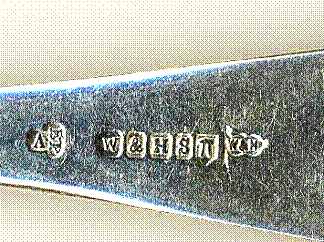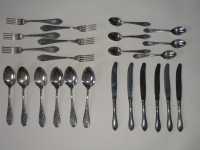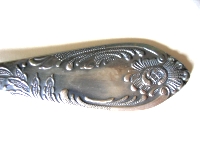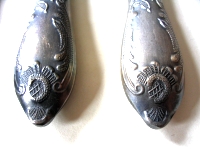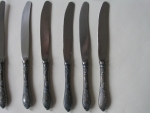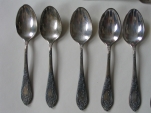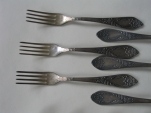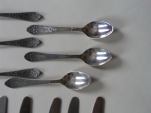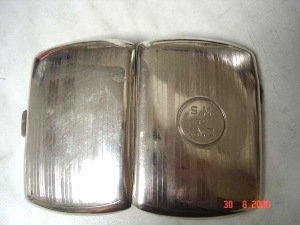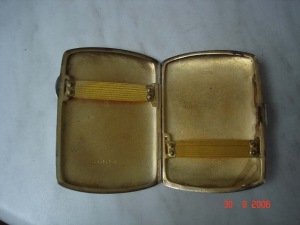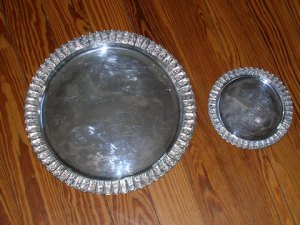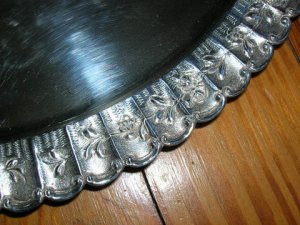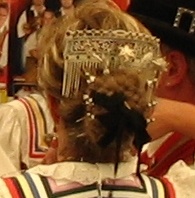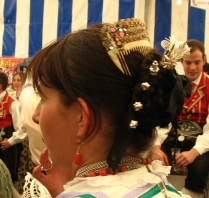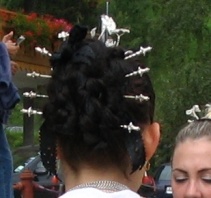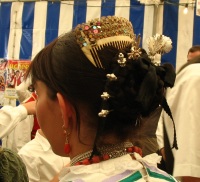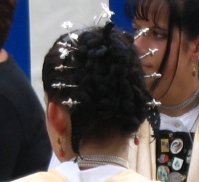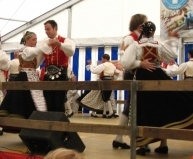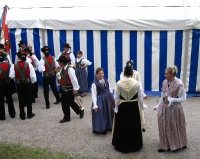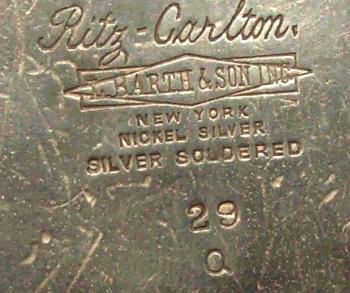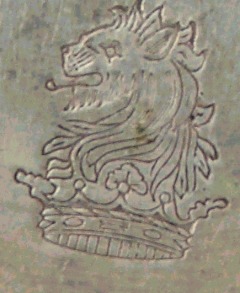 newsletter # 30 October 2006
newsletter # 30 October 2006www.ASCASonline.org
email: silverassociation@yahoo.it
YOUR GUIDE TO THE OCTOBER NEWSLETTER:
articles new members
members' window
|
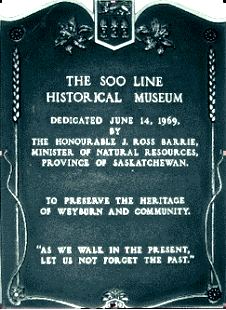
Jacquie Mallory and Giorgio
Busetto present: |
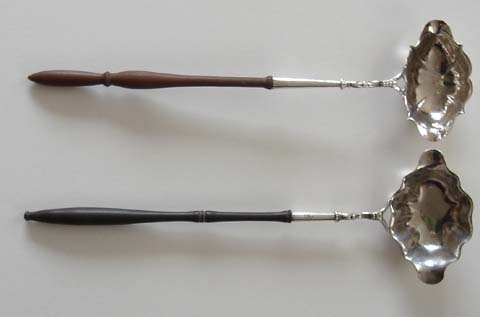 Dorothea Burstyn presents:
Dorothea Burstyn presents: "Let's drink and be merry" - a study about punch ladles This study concerns itself with punch ladles and more specifically 18th and 19th century's examples. They are found still relatively often in today's market place and are so within reach of interested collectors. Still useful in the modern household, they are also enough varied in style and therefore qualify easily as collector's items.... click here |
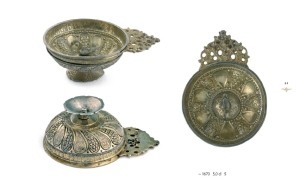
Kari Helenius presents: |
New members
Welcome to new ASCAS members:
Donna Claiborne - USA
Paul Craft - Australia
French Dumas - USA
Leslie Espinosa - USA
Thomas Feilenreiter - Austria
Theresa Nolet - Canada
Catherine Reilles - France
Ariosto Rubino - Italy
Jossi Shoch - Hungary
Soo Line Historical Museum - Canada
Malcom Stander - South Africa
Renee Watkins - Canada
Members' Window # 30
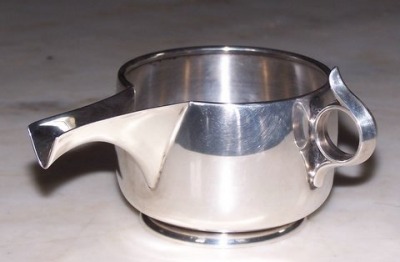 Jayne Dye presents:
Jayne Dye presents:Georg Jensen? ... Art Deco?... NO... Ancient Rome! This is the silver plate reproduction made in 1966 by Gorham Corporation of a 'trulla' (ladle or pitcher), a highly unusual piece of Roman silver from the republican period. The original, now owned by the Metropolitan Museum of Art in New York, has no parallels in other Roman art objects and utensils; nor has it any known antecedents in Greek vase shapes... click here |
Mail to ASCAS: e-mail
silverassociation@yahoo.it
Tina Reuwsaat writes:
I found your site via Google. I am looking for info on a set of
EPNS England silver spoons I have. They are engraved 1915-1940,
have red celluloid or glass balls on the end of the handle and
the bottoms of the bowls are bent up to create a ledge. I never
saw this form before.
I am not so interested in the maker, but rather what this type (form)
of spoon was used for, because the shape of the bowl is very
unusual. I am also wondering about the significance of the
engraved anniversary dates. The only historical event in that
year of any significance was the sinking of the Lusitania, and I
doubt they made commemorative spoons of it!
Thank you for your help! I look forward to the replies
Tina Reuwsaat
Southern Oregon Historical Society
Graham Griffiths writes:
I have 2 set of spoons marked with a logo + CCCP
logo/k MHU u2p95k The other looks a gilded colour and marked
logo/k 5p65k I hope you can help as I have spent hours trawling the net for info
Thanks
Graham
Bert Hoebink writes:
a friend has a knife with some marks, presumably maker's
marks, as below.
We can't determine them. Perhaps You can help me.
Thank You very much
Bert Hoebink
Eric Schneider writes:
I have a 24 piece set of, what I believe is Russian, assorted
silver cutlery, which I would like to know provenance. The set
consists of 6 tea spoons, 6 knives, 6 forks and 6 table spoons,
of identical design, probably dating from around the turn of the
last century (but I cannot be sure). There is an identical stamp
in Cyrillic on all items.
I know for a fact that this set was brought to the UK from
Poland some 25 years ago. I just don't know how old (or new) it
really is, I just suspect the set is older than 25 years -
difficult to tell from the design - because it came in a
home-sewn wrap with individual compartments for each piece made
from a cotton bed-sheet - really well made actually and quite
effective as a protection, so the set must have been a family
heirloom. I am ignorant of the maker.
Would a member of your association be able to identify the stamp
of the maker with possibly a rough date when the pieces were
made
Many thanks
Kind regards,
Eric Schneider
I believe that your pieces are not sterling or solid silver
but metal or silverplate. Anyway their mark does not belong to
Tsarist Russia.
Does any member recognize this mark?
Giorgio Busetto
ASCAS Secretary
Shailesh Sawant writes:
I need your help in finding out makers mark. I have just
purchased a sterling silver cigarette case its hallmarked with
Anchor, lion, and letter s that suggests it's 1917 Birmingham
silver. If you open this case on left hand side along with these
three marks there is makers mark - T.F.N.&S.
I don't know who they are. On right hand side again there is mark
of lion and letter S. also on small lock there is hallmark of
lion, which I haven't seen in other cases. This mark is very tiny
but I am sure its lion.
On the front it says "S.M. TO J.M.D." this suggests to me as it's
a gift from someone named S.M. to J.M.D.
I am just interested in makers mark or if anyone knows about
these types of marks?
Thanks in advance.
Regards
Shailesh Sawant
Does any member have information about the maker of this
cigarette case?
Giorgio Busetto
ASCAS Secretary
Maria Ines Braudo writes:
Dear Silver Association Members:
I'm a new member of your association and ready to learn from you.
I need information about the hallmarks in the pieces enclosed.
Thanks for your interest
Maria Ines Braudo
Alan Yates writes:
The Secretary
Dear Sir
I should very much appreciate a brief account of why Britain
gave up its century's old system of silver hallmarks. Gone are
the regional assay offices and lion passant, gone are the date
letters, shields, and sovereigns head, and with them the history,
romance, and charm; all of which contributed to the interest and
indeed value of English sterling silver.
The lion passant, having been dumbed down with the tautologous
925, indicates the involvement of Brussels.
Such a pity.
I look forward to being enlightened, if not mollified.
Alan Yates
Dear Alan,
I'm unable to 'enlighten' you and, as Italian, I have a similar
regret and 'nostalgia' for old English hallmarking system.
Maybe someone of British members of ASCAS will be able to
enlighten us.
Giorgio Busetto
ASCAS Secretary
a small addition by Giorgio Busetto to his article "Italian
silver hair-pin: the sperada", published in
September Newsletter :
A follow up to my article about the hair pin (spadinn) used
in the Brianza (an area on the Northern Italy region of Lombardy).
Now I may illustrate another hair adornment used in Canazei in
the Fassa Valley (Dolomiti, Trentino Province, Italy).
Fassa is one of the Italian valleys were survives and is still
spoken the "Ladin" language. The origins of the language go back
to the Roman Empire, when the legions marched into Rhaetia. The
Latin of the conquerors was mixed with the language of the
native Rhaetians. During more than four centuries of Roman rule,
this Rhaetian language spread from the Swiss Alps to the
Adriatic. When the Germanic tribes of the Bavarians and Alemans
moved south in the 6th century, the area of the Rhaetian
language was split up, leaving enclaves in which the language
has survived against all obstacles right down to the present
day, e.g. in the canton of Grisons (Switzerland), in the
Dolomites (Val Gardena, Val Badia, Val di Fassa, Livinallongo,
Cortina) and Friuli. Nowadays Rhaeto-Romanic is taught at school
as an obligatory school subject, books and magazines are
published in this language and there are also daily programmes
on radio and TV.
These images were taken on September 3, 2006 at the "Festa da d'Ista"
(Summer Feast) in Canazei.
Giorgio Busetto
Replies to questions
Gail B. Randall receives this reply about Barth & Son, Ritz Carlton silverplate ( see September Newsletter) Karin Sixl-Daniell writes: Here is some information on L.Barth&Son: They seem
to have retailed (wholesale only?) all kinds of cookware,
including items made of copper, silverplated items and
apparently also china.
|
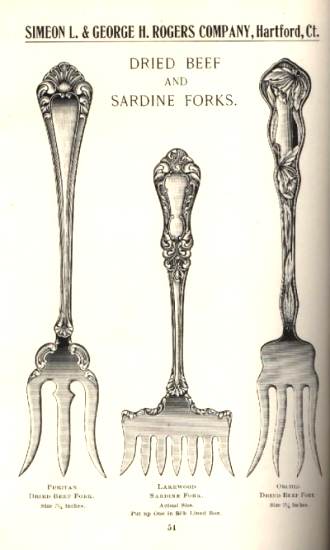
|
This
month ASCAS presents the images of two dried
beef and one sardine fork from the catalogue No
10 (date unknown) of Simeon L. & George H.
Rogers Company, P.O. Box 1205, Hartford, Conn.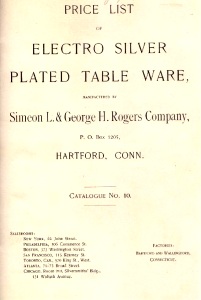
|
I'm particularly proud to present
this edition of ASCAS Newsletter, exceptionally rich of
content and with three articles instead of usual two.
Another element of satisfaction is that (unlike other
recent newsletters) most of this material was written by
ASCAS members and not by ASCAS secretary.
I hope that this trend will continue in next months, but,
at the present, I have received no new article to be
published in next Newsletter.
Closing our OCTOBER 2006 edition of ASCAS Newsletter I
hope you have appreciated its content.
Your comments, suggestions and advice will be of great
help.
My thanks to Maria Ines Braudo (Argentina), Dorothea
Burstyn (Canada), Jayne Dye (USA), Graham Griffiths (England
UK), Kari Helenius (Finland), Bert Hoebink, Jacquie
Mallory (Canada), Tina Reuwsaat (USA), Shailesh Sawant,
Eric Schneider (England UK), Karin Sixl-Daniell
(Austria), Alan Yates (Austria) for their invaluable
contributions.
Giorgio Busetto
Secretary
ASCAS is a community of people having a
common interest in antique silver.
|



